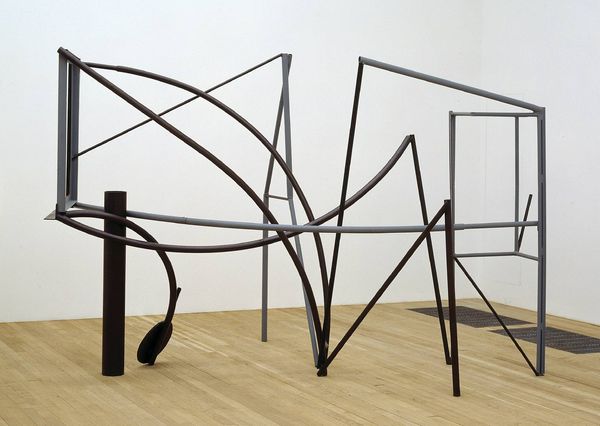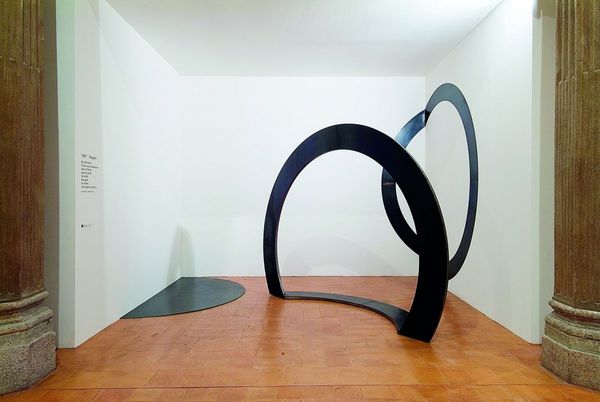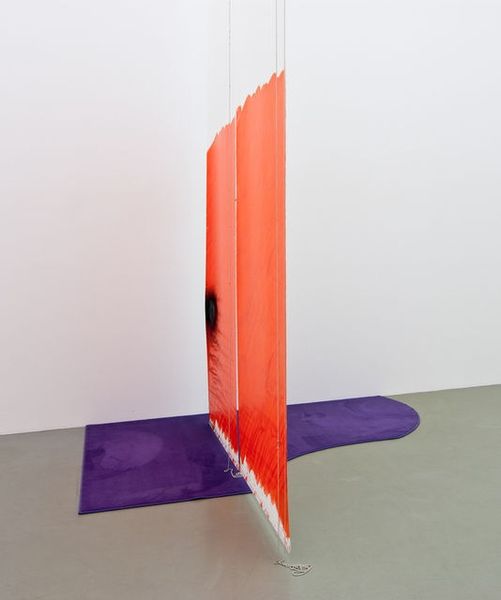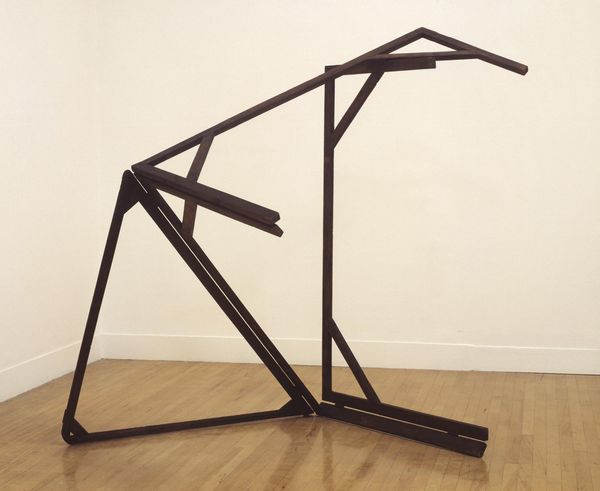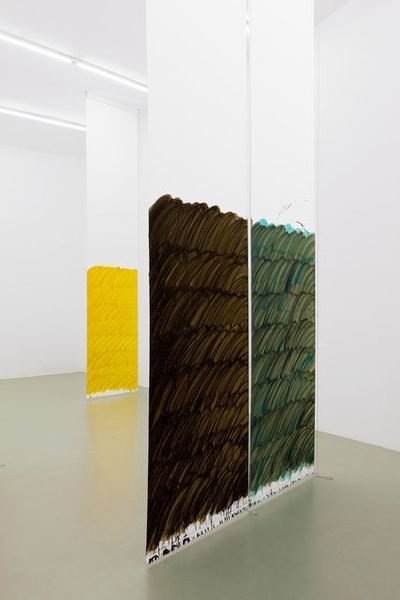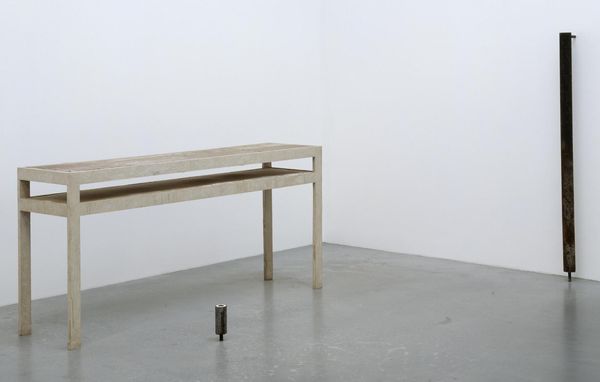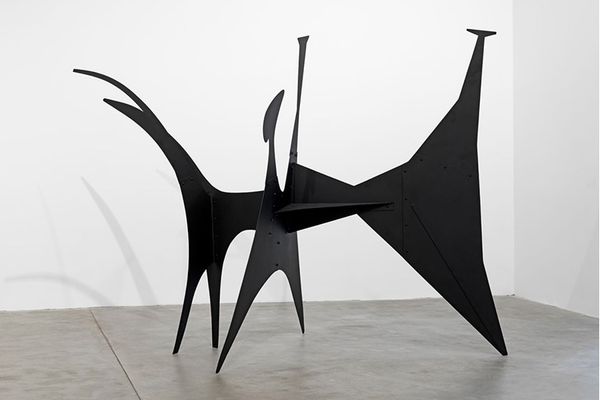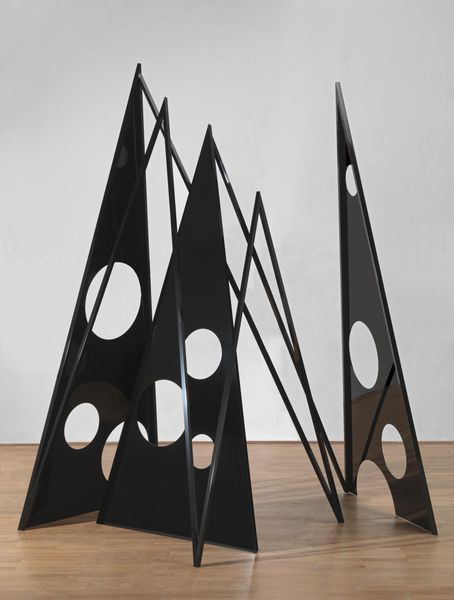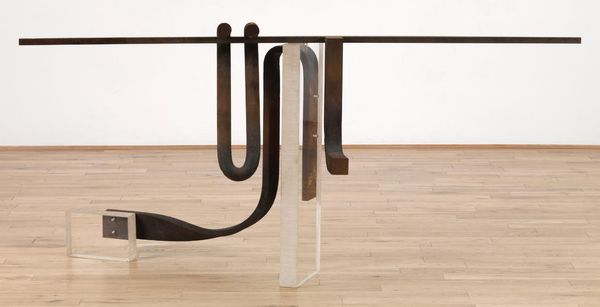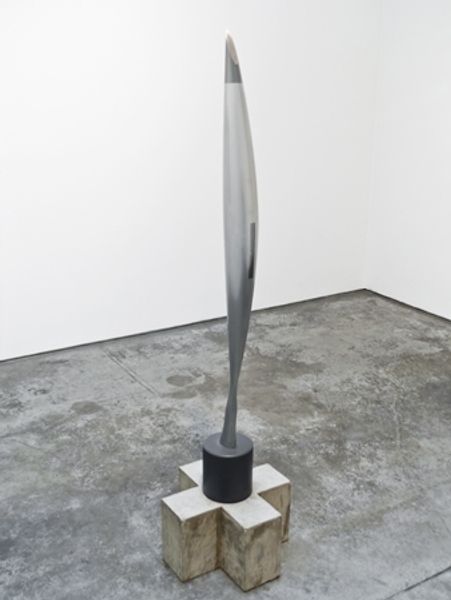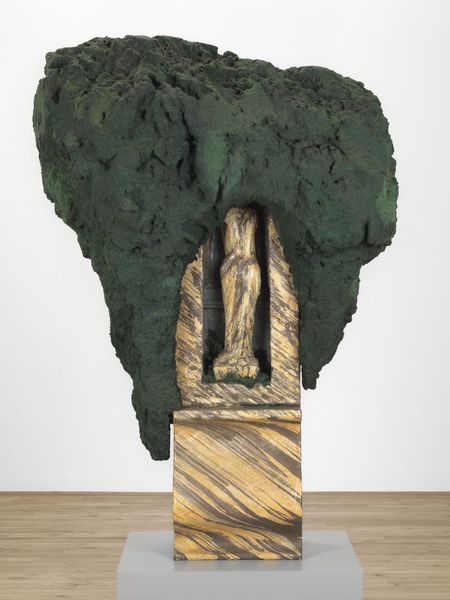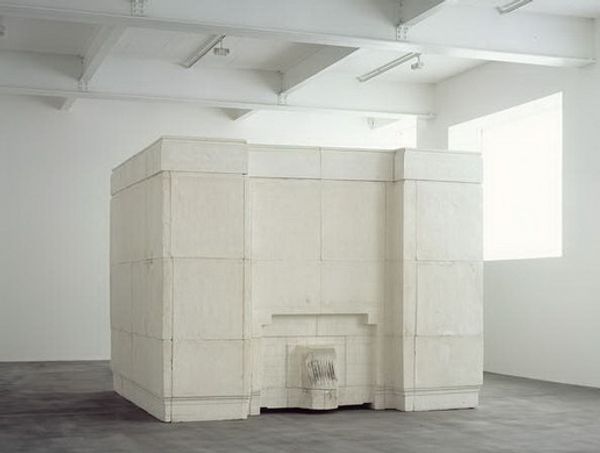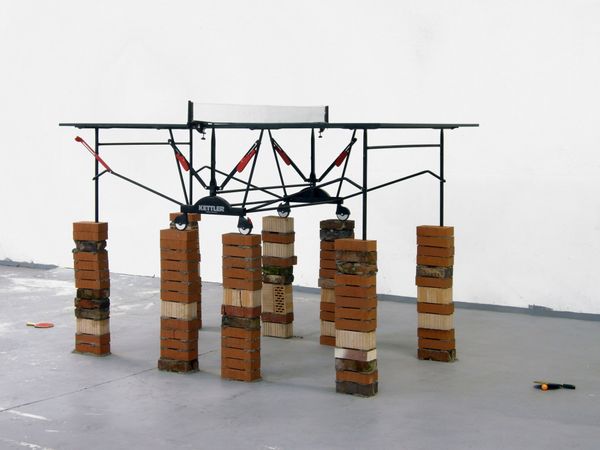
Dimensions: displayed: 1815 x 2700 x 2800 mm
Copyright: © Gary Webb, courtesy The Approach, London | CC-BY-NC-ND 4.0 DEED, Photo: Tate
Editor: This is Gary Webb's "Sound of the Blue Light," its date is unknown. I'm struck by the contrast between the solid, geometric forms and the playful, almost cartoonish elements. What do you see in the composition of this piece? Curator: The interplay of textures is key. Note how Webb juxtaposes the rough, composite material with the smooth surfaces of the speaker and the reflective disc. The artist creates a visual rhythm. Editor: So it's about the relationships between these different surfaces? Curator: Precisely. Consider also the lines created by the edges of the forms and the negative space. They establish a visual architecture, grounding the work. The artist guides our gaze, prompting questions about form and function. Editor: I hadn't considered the negative space as actively shaping the piece. Thanks for pointing that out. Curator: My pleasure. It highlights how the artist employs fundamental formal qualities.
Comments
tate 7 months ago
⋮
http://www.tate.org.uk/art/artworks/webb-sound-of-the-blue-light-t07947
Join the conversation
Join millions of artists and users on Artera today and experience the ultimate creative platform.
tate 7 months ago
⋮
This is a floor-based sculptural installation with sound. Three large slabs of textured black marble form a tapering wedge-shaped cubicle which is closed at the narrower end. The middle slab has a window cut out of it in the form of a square, a triangle and a semi-circle bleeding into each other. A wooden-box speaker stands on the floor at the end of the cubicle. Five further slabs of marble are laid flat on the floor around the cubicle, abutting its edges. They describe a form approximating to a ‘Y’, where the arms enclose the cubicle on either side of its two walls, and the leg is aligned with and extends beyond its closed end. The arms of the ‘Y’, stretching beyond the entry to the cubicle on either side, have rounded ends. A brass pole slots into a hole in the marble at the end of the leg of the ‘Y’. A roughly elliptical shape cut out of chipboard is mounted on this, facing away from the sculpture. Cartridge paper, covered in rough pencil shading before being cut to size, covers both sides of the chipboard. In the centre of the pencil shading a cluster of differently sized, coloured plastic boxes is bolted together on one surface of the elliptical form. It forms an abstract composition of three dimensional coloured rectangles. The sound playing on the speaker is a recording of ‘Over the Rainbow/What a Wonderful World’ by Hawaiian ukulele player and singer Isreal Kamakawiwo’ole (1959-97). The track, which features only the singer’s voice and ukulele, plays for six minutes followed by six minutes of silence, repeated on a ninety minute loop. It is generally known as the soundtrack to the Hollywood film Meet Joe Black 1997, directed by Martin Brest, where it accompanied the opening scene on the American war in Vietnam.
